
Considered a luxury soap, triple milled soap is a high-quality soap that is often featured in gift baskets that contain toiletry assortments and are offered as a complimentary amenity for hotel guests. Triple milled soaps are usually colored and scented with fragrances such as lavender, cucumber, vanilla, or orange, although you can also buy unscented triple milled soaps.
Alternate Name
Triple milled soap is also called French milled soap, because the triple milling is a traditional method used by French soap makers.
Process
Soap is formed by a process called saponification, a chemical reaction between a fat, such as vegetable oil or tallow, and an alkali such as lye. After a neutral base soap is saponified, it is grated into fine particles and passed between a pair of closely spaced rollers, a process called milling, until it turns into a paste.
Fragrances and colorings, which are added after the initial milling, become evenly and thoroughly distributed during subsequent milling procedures. A triple milled soap goes through this process three times before it is formed into cakes of soap.
Features & Benefits
The triple milling process produces beautiful, vividly colored, uniform bars of soap that are very hard, glossy and smooth. Triple milled soap lathers well and the bars last a long time due to their hardness. The soap is easily formed into shapes other than a traditional bar shape such as seashells or even ducks.
Disadvantages
Manufacturers often add synthetic ingredients to increase the plasticity of the soap so it can be easily shaped or molded during the rigorous milling process. The addition of synthetic ingredients also helps manufacturers produce soaps that are identical from batch to batch.
Misconceptions
A true milled soap cannot be made at home; it can only be made with commercial milling machines. Sometimes homemade or handmade soaps are erroneously termed milled soaps, but they are actually made by a soap making process called rebatching. Although charming in their own way, rebatched soaps do not compare as favorably to true milled soaps, because they do not share the characteristics as triple milled soaps such as smoothness of texture and glossiness.
Related Articles

What Is Triple-Milled Soap?
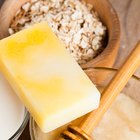
How to Make Honey & Oatmeal Soap
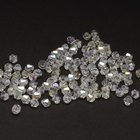
What Is Crystal AB?

Disadvantages of Pears Soap
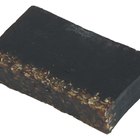
About African Black Soap
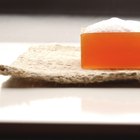
Ingredients of Bar Soap

Ring Spun Cotton vs. Combed Cotton
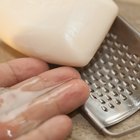
How to Make Bar Soap Into Liquid Soap ...

Nutri-Grain Bar Nutrition Information

What Kind of Oil Do You Use in Brownie ...

Ingredients in Wheat Thins

What Materials Are Used to Make Costume ...

What Is the Difference Between Wine & ...

How Does Homemade Soap Compare to ...

What are Goblets Used For?

Calories in a Mini Mars and a Milky Way ...

Can I Substitute Vodka for Rum in a ...

What Are the Benefits of Olive Oil Soap?

Glycerin Soap Ingredients

Can a White Gold Ring Be Made into ...
References
- Soapmaker’s Companion; Susan Miller Cavitch; 1997
- The Natural Soap Book: Making Herbal and Vegetable-Based Soaps; Susan Miller Cavitch; 1995
Writer Bio
Amy Marie is a software engineer and technical writer who earned a Bachelor of Arts degree in computer science at California State University Long Beach. Her writing appears on eHow and Examiner.com. She specializes in writing about technical, consumer and lifestyle topics.
Photo Credits
soap image by Gina Smith from Fotolia.com